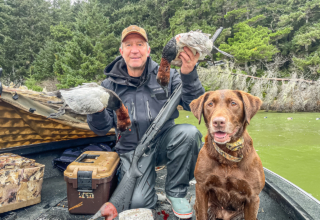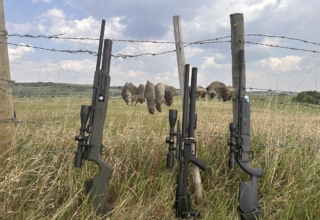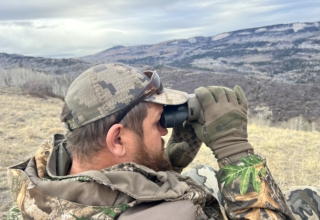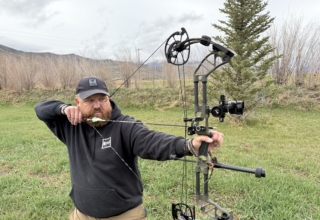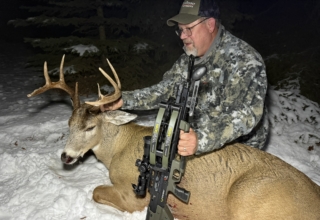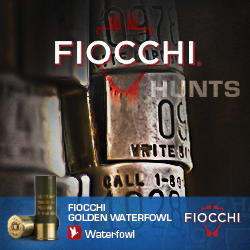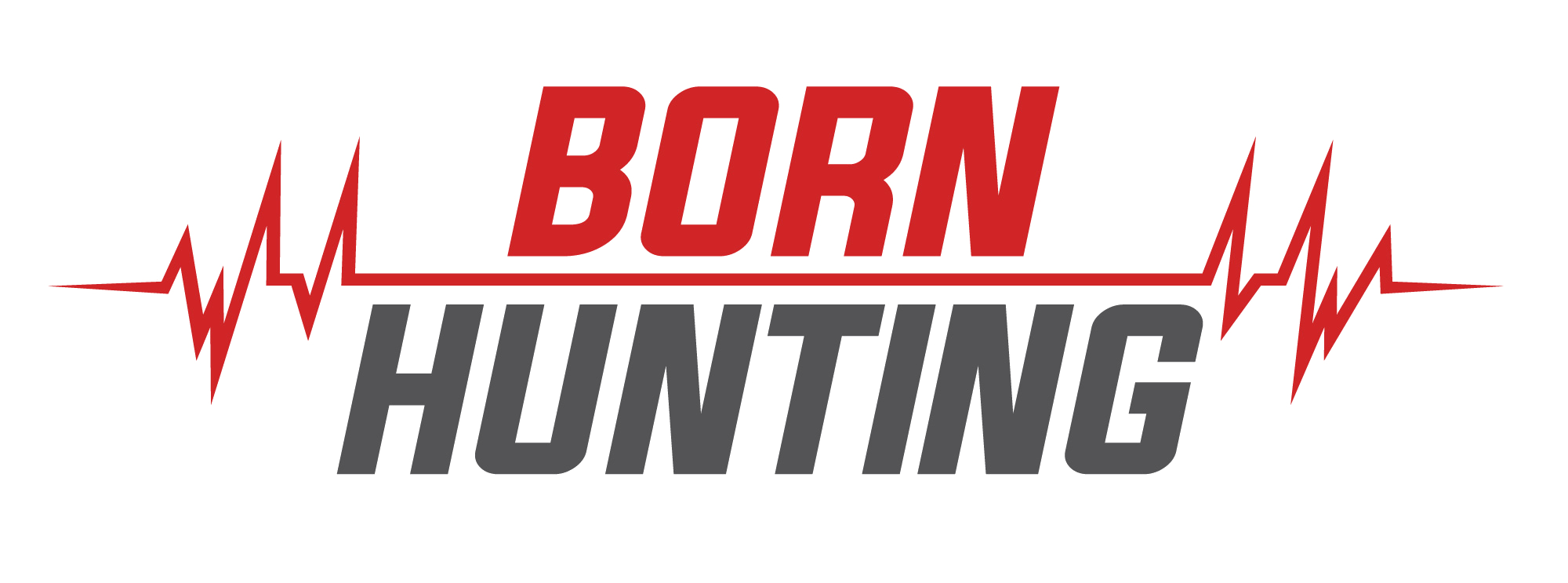An optic tripod combo that reduces weight and ensures backcountry performance, the Razor HD Spotter and Tricer-BC Carbon Tripod are a dynamic duo.
by Zach Bowhay
A compact spotter and lightweight tripod can be a hunter’s best friend, or a compromise you regret. I put this setup to the test through a complete Idaho fall to see where it really shines.
As I get older, my pack gets heavier. Each season, whether I’m day hunting or backpacking, I unload my entire pack and go through each item carefully. The first thing I ask myself is, “Do I need this?” At this point in my hunting career, I have a pretty good idea of what I do and don’t need. If I don’t need something, I pull it out, and it gets removed.
I end up piling everything back in my backpack and getting ready to carry that seemingly increasingly heavier pack around the mountains for the next couple of months.
When I go through my gear, I also consider whether there are lighter options for the items I usually pack. As gear improves, upgrades to lighter equipment are typically available. However, when it comes to optics and tripods, I dislike sacrificing performance to save weight.
Strapping a spotter and a tripod to any pack adds noticeable weight. Good optics and stable tripods aren’t usually the lightest things out there, and there are hunts where that extra weight is worth every ounce. However, there are also hunts where I don’t need to be quite as picky about measuring a buck or bull down to the inch.
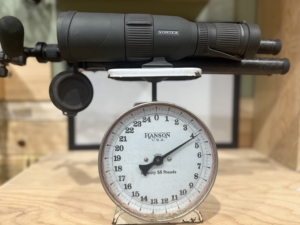
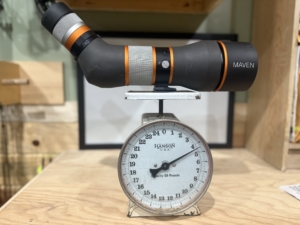
At times, I’m not glassing miles and miles but focusing on a specific drainage or a few drainages where large optics aren’t as necessary. In such instances, a more compact and lightweight setup makes sense. I often find myself in these situations during the general season while hunting with over-the-counter tags. Because of that, I found a lighter setup that I wouldn’t mind strapping to my pack, just in case I need it.
My Choices
For years, I’ve used larger spotting scopes from companies like Vortex, Maven, Swarovski, and Zeiss. Not referring to rifle scopes, but strictly to spotters, binoculars, and similar optics, there are different quality tiers. The top tier includes brands like Swarovski, Zeiss, and Leica, while the second tier includes companies such as Vortex, Leupold, and Maven.
I fully understand that some spotters may be “better,” but they also come with a much higher price tag. I’ve always believed you should buy the best optics you can afford, but many of these second-tier options are excellent products that often cost half as much and still perform brilliantly in the field.
After extensive research on compact spotting scopes, I decided to go with the Vortex Razor HD 13–39×56 (Straight). This scope is ultra-compact, measuring 11.1 inches and weighing 29.5 ounces. Along with saving weight in my pack, I wanted to reduce bulk, which is always essential, especially on a backpack hunt.

Similar to optics, there are numerous tripod options available. I’ve used several from companies like Manfrotto, Sirui, Vortex, and my favorite, the Outdoorsmans. All of them have been solid, but I was looking for something lighter and wanted to try something new. For this reason, I opted for the Tricer-BC Carbon Bipod, paired with the Tricer-LP Head.

Like the spotter, this tripod is both compact and lightweight. The tripod comes with 4- and 9-inch center columns to allow for maximum customization. It weighs 26.6 ounces with the short version and 27 ounces with the 9-inch center. The LP head weighs just 4.5 ounces. When fully collapsed, the tripod measures 15 inches (plus the head) and has a maximum height of 40 inches.
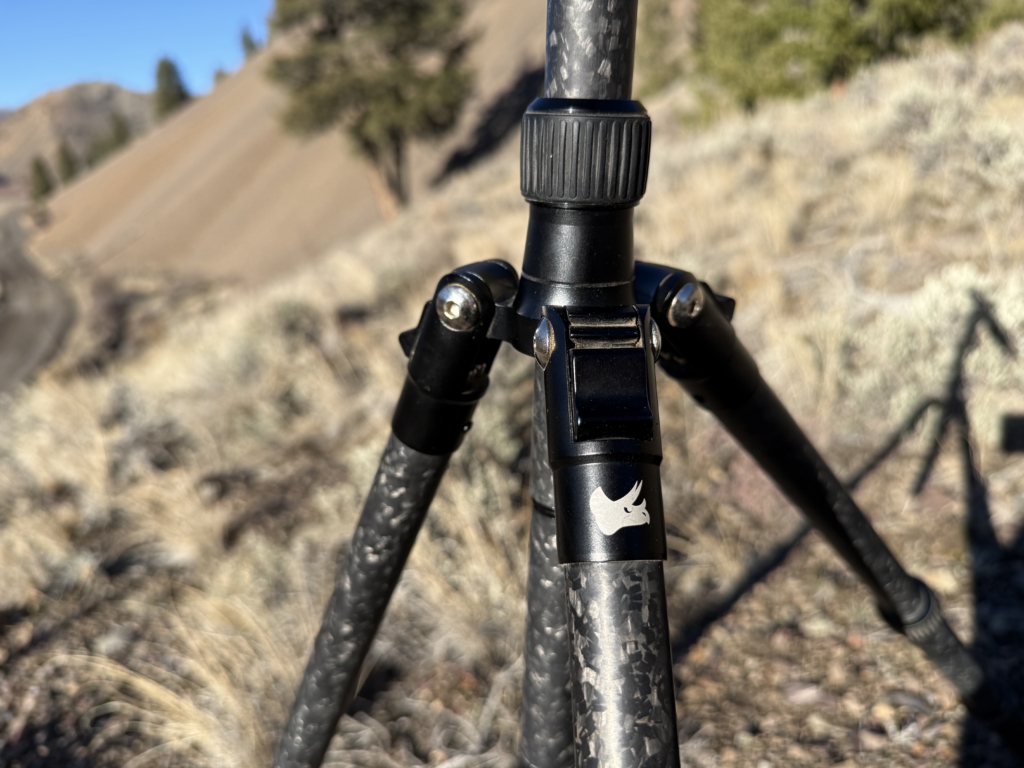
Initial Thoughts
The compact Razor has the same build quality as the larger Razor models and feels solid. The power and focus rings provide sufficient resistance to stay in place while still allowing for smooth adjustments. The power adjustment is on the eyepiece, and the focus wheel is ergonomically placed on the body of the spotter, right where it should be.
The scope comes with attached rubber covers for both the objective and eyepiece ends, along with a neoprene cover that can stay on at all times. Attaching the scope to most tripods, like the Tricer, is simple with the Arca-Swiss attachment plate. If you use another tripod, you can easily attach your own mounting plates.
The Tricer tripod and head are straightforward and well-built. The carbon legs use a quarter-turn adjustment system rather than a clamp-style system. I was immediately impressed with the Tricer-LP head. The heads’ compact size and light weight stood out, but time in the field would tell how well my new system would hold up.
To Read More About Tricer’s Tripod Options, Click Here!
In the Field
I started using this setup periodically during the summer. It proved lightweight and compact, but when glassing from the truck or around camp on summer outings, size isn’t really an issue. I found myself reaching for my bigger spotter and tripod more often, mostly because I was glassing longer distances and liked being able to stand while doing it.
I knew the real test would come in the fall. Over the past several years, I’ve rarely carried a spotter or tripod on my archery elk hunts because, honestly, with over-the-counter tags, I’m not that picky. All I need to see from a distance is whether there’s a decent bull, and if there is, I’m happy to go after him.
Still, there are times when I see a bull, buck, or even a mountain goat farther off that I want a closer look at. It happens rarely enough that it never feels worthwhile to carry extra weight. With this lightweight setup, though, I didn’t mind packing it along. I also made it a point to bring it on my mule deer hunts in Idaho this fall.
In the field, the scope took a little getting used to compared to my bigger spotters. For one, I’ve grown to prefer an angled spotter, but I went with the straight model for this scope. I thought it would be more compact and save space in my pack. While that may be true, I wish I had gone with the angled version. This was especially noticeable when using the shorter tripod.
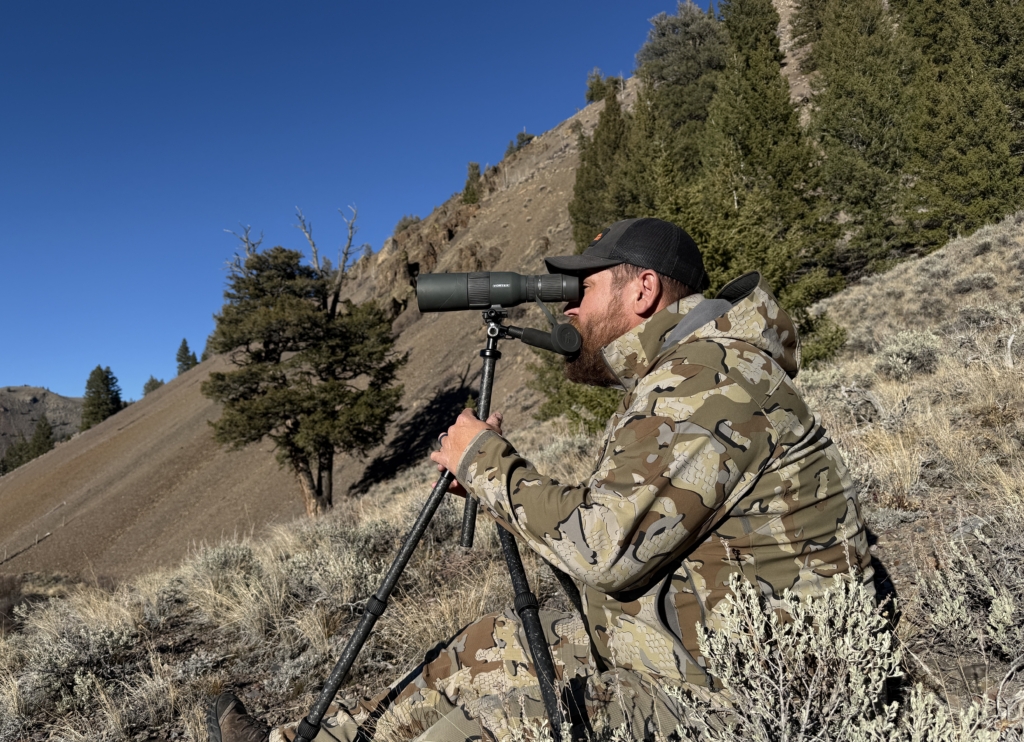
There were times this fall when I couldn’t quite get high enough, or I had to crane my neck at an uncomfortable angle to see what I wanted. If I were to do it again, I’d either opt for a taller tripod or an angled spotter—most likely the latter, as it would keep things compact while making glassing more comfortable.
Optically, the scope performs well, and the 39x power isn’t as limiting as I thought it might be. Over the years, I’ve noticed that during the middle of the day, I usually have to back my spotter down to cut through heat waves, and I typically end up around that 40x mark.
In most situations, the power range on this scope is more than enough. There were a couple of times when I spotted a buck way off and wished for a little more power, but for 90 percent of what I do, it works just fine.
The 56mm objective lens is a slight limitation, as it loses some light in low-light conditions. Like the power issue, it’s not a significant problem, but you do lose a little time at dawn and dusk that you would keep with a larger spotter. The smaller scope also has a narrower field of view, which makes it more challenging to identify animals at first. After spending some time with it in the field, however, I grew accustomed to scanning more deliberately, and it became less of an issue.
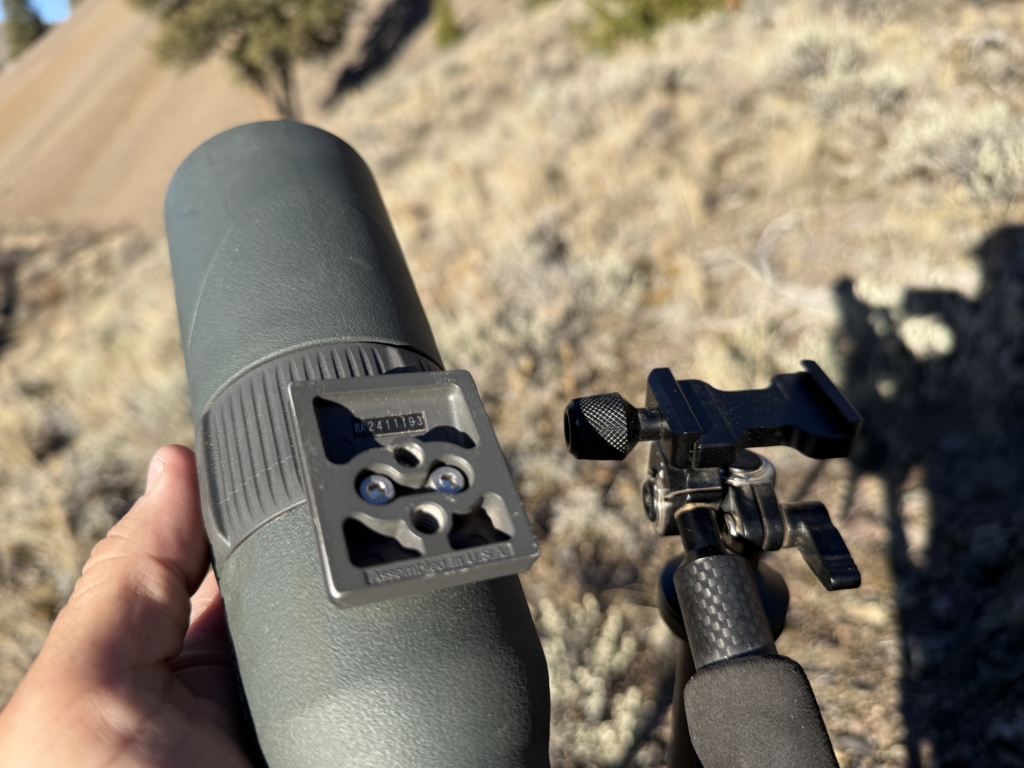
The tripod has performed well with no issues. The Arca Swiss attachment lets me keep the small Razor and even my larger spotters securely mounted with no trouble. As I hoped, the LP Head has been a pleasant surprise. For its size, I’ve been impressed by how smooth and capable it feels — tightening down the handle locks most optics firmly in place. The panning lever is smooth, and you can lightly loosen it to pan while keeping just the right amount of tension. This is a critical feature.
Pros
- Light and easy to pack: It doesn’t take up much room and saves weight, which makes a big difference on long hunts.
- Good glass for the size: The clarity and power are better than you might expect from a compact spotter.
- Simple and solid tripod setup: The Tricer tripod and LP head are smooth and stable, adding minimal bulk.
Cons
- Not great in low light: The smaller objective loses some brightness early and late in the day.
- Straight eyepiece comfort: The straight design can make it difficult to hold the glass comfortably from lower angles.
- Could use a little more power: The 39x top end works fine most of the time, but sometimes you want just a bit more.
Final Thoughts
After using this scope throughout the fall, I’m happy with my choice. The weight and bulk I cut from my pack are noticeable, and I always like having a spotter with me just in case. There were multiple times this fall when I was glad to have it, and when I used it, I was impressed with its performance.
My biggest issue is with the straight version. As mentioned earlier, if I were to do it over again, I would choose either a taller tripod or the angled scope, with the angled version most likely solving my issues easily.
The tripod itself is fine, especially considering I intentionally bought it shorter and more compact.
The best question to answer is: If I could only have one tripod and spotting scope, would this be my setup? The answer is no. For all-around hunting, a higher-power, larger-objective scope and a tripod that works from a sitting to a standing position are more versatile. I’ve used that kind of setup for many years, so investing in a more compact version for specific hunts was worth it to me.
As for this setup, I like it a lot. I might switch to an angled scope in the future, but overall, it’s very capable. Ultimately, only you know your hunting style and can make the most informed gear choices. If a lightweight, compact setup is what you’re looking for, I would strongly consider the Vortex Razor HD 13–39×56 and Tricer BC/LP combo. If you want larger optics and greater versatility, it’s worth considering options from these companies or others.


